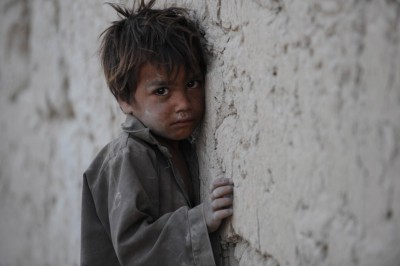
KARACHI: Malnutrition is rampant in the province, with almost half of the children in Sindh under the age of five suffering from malnutrition, revealed health experts on Thursday.
During a consultation session titled ‘Nutrition and Human Rights’ organised by Save the Children at Avari Hotel on Thursday, speakers emphasised citizen’s right to nutritional food. The session aimed to promote nutrition as a basic human right by increasing understanding and knowledge of NGOs on nutrition.
“We know that health interventions alone can’t deal with the issue of malnutrition,” admitted Dr Irshad Danish. “We require a repeated call to action and advocacy from civil organisations to help tackle the issue and, if prioritised, malnutrition can end within a generation in the province.”

According to Save the Children advocacy and campaigns provincial manager Iqbal Detho, human rights and nutrition advocates share a primary concern for the individual human being. He added that adequate food and nutrition is the right of every citizen, according to Article 38 of the 1973 Constitution of Pakistan, which states that ‘the state shall provide basic necessities of life, such as food, clothing, housing, education and medical relief’. Detho also highlighted various human rights organisations focusing on providing adequate food and nutrition. He revealed that the Convention of the Rights of the Child (1989), states that ‘state parties recognise children’s rights to the highest attainable standard of health.’
Sindh nutrition cell programme officer Dr Sakina briefed the audience about the overall nutritional condition of children in Pakistan, particularly in Sindh.”More than 350,000 children die in Pakistan every year before their fifth birthday and 35 per cent of these deaths are due to malnutrition,” said Dr Sakina. “At an alarming rate of 49.8 per cent, Sindh has a dangerously high rate of nutritional stunting among children under the age of five.”
Dr Sakina disclosed that these figures have not improved in the past decade, with both genders suffering from malnutrition. “Unlike many other countries in South Asia, there is no significant difference in the nutritional status of young girls and boys in Sindh,” she said.
Sindh food security cluster coordinator Ashraf Ali, who was also representing the Food and Agriculture Organisation, said only 52.5 per cent of women in Sindh have a normal body mass index, while 23.7 per cent are underweight and 24 per cent are overweight or obese.
“Vitamin A deficiency, which jeopardises the maintenance of primary functions including eyesight and seriously reduces immune functions, leaving the body more susceptible to infection, affects 37.1 per cent of women and 53.3 per cent of children in Sindh,” Ali added. “Both these figures are the highest of any province in Pakistan. However, he applauded the provincial government’s initiative for the recent Sindh Protection and Promotion of Breastfeeding and Child Nutrition Act.
Those present at the event agreed to move forward on both policy and implementation levels and expressed their commitment to take up the issue of malnutrition on an organisational platform.
Published in The Express Tribune, December 6th, 2013.





























































COMMENTS
Comments are moderated and generally will be posted if they are on-topic and not abusive.
For more information, please see our Comments FAQ